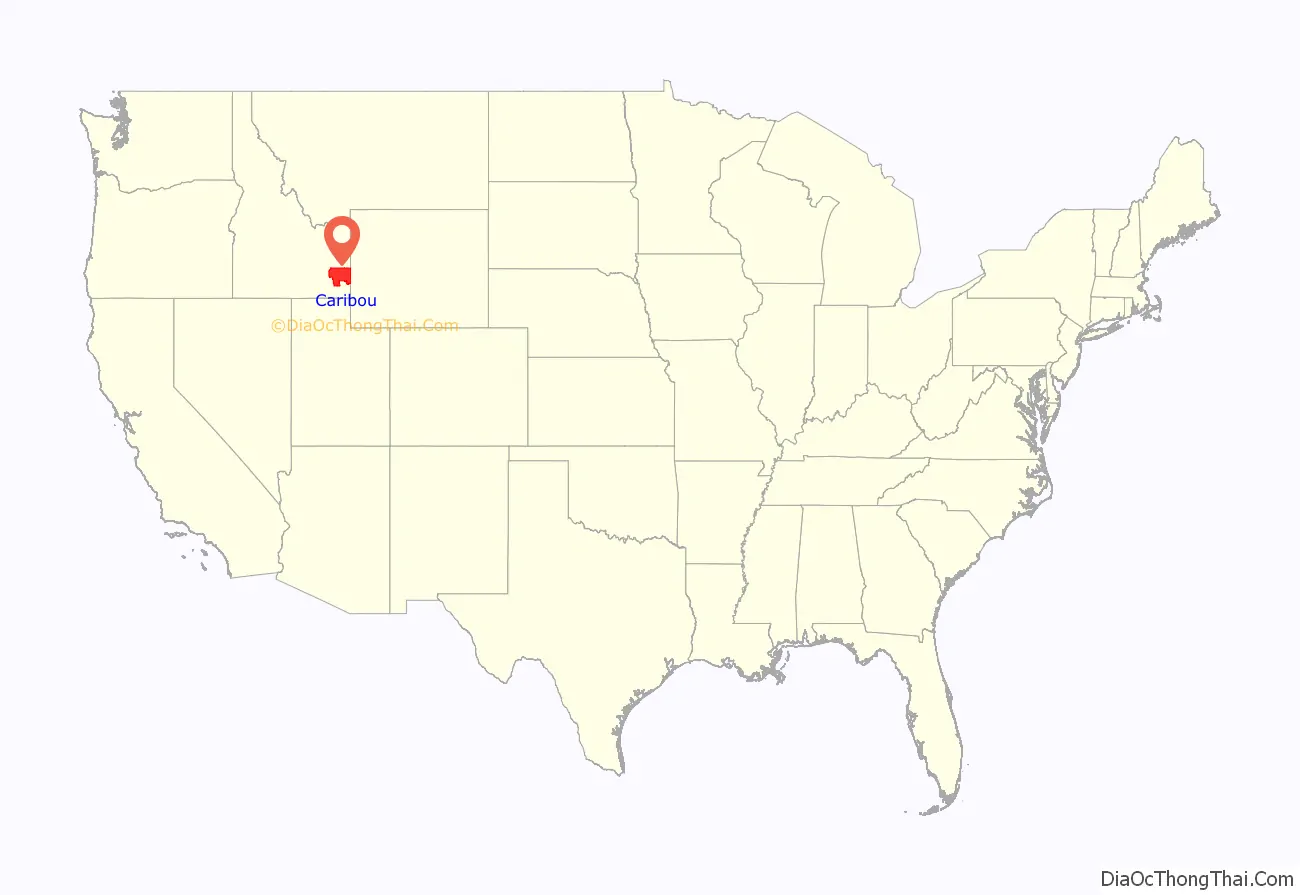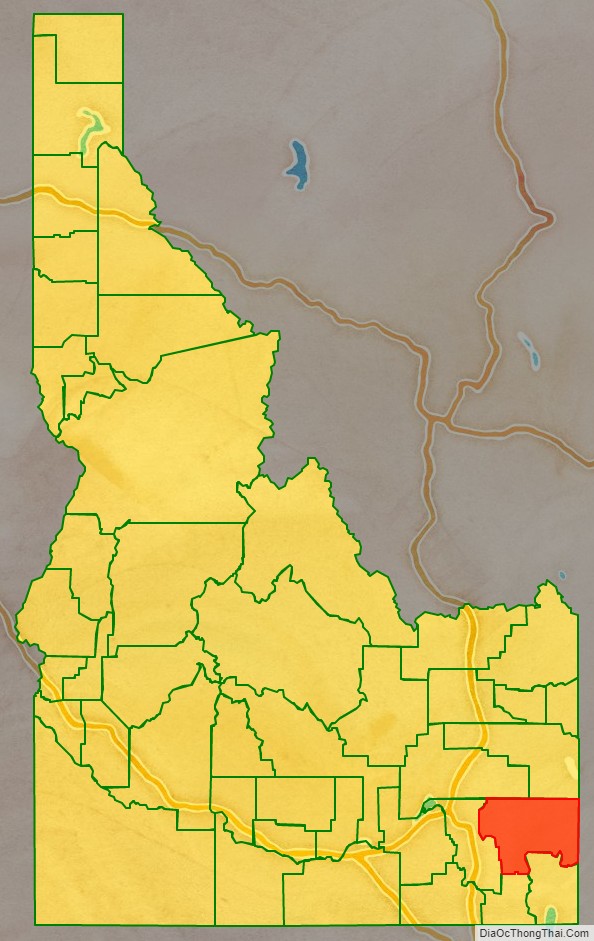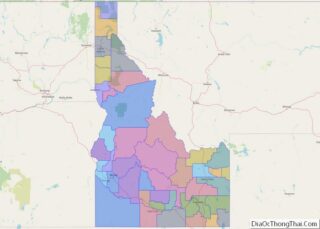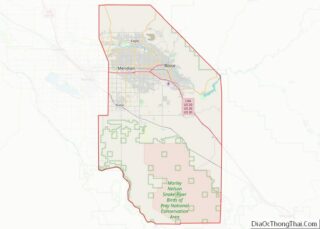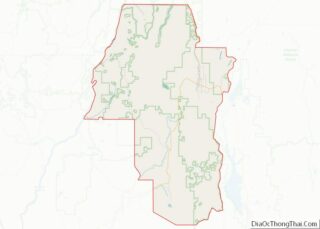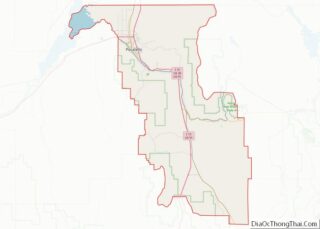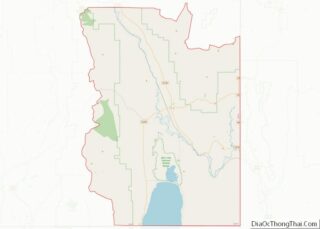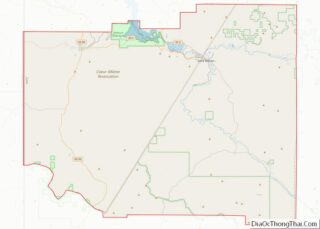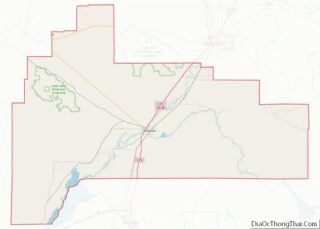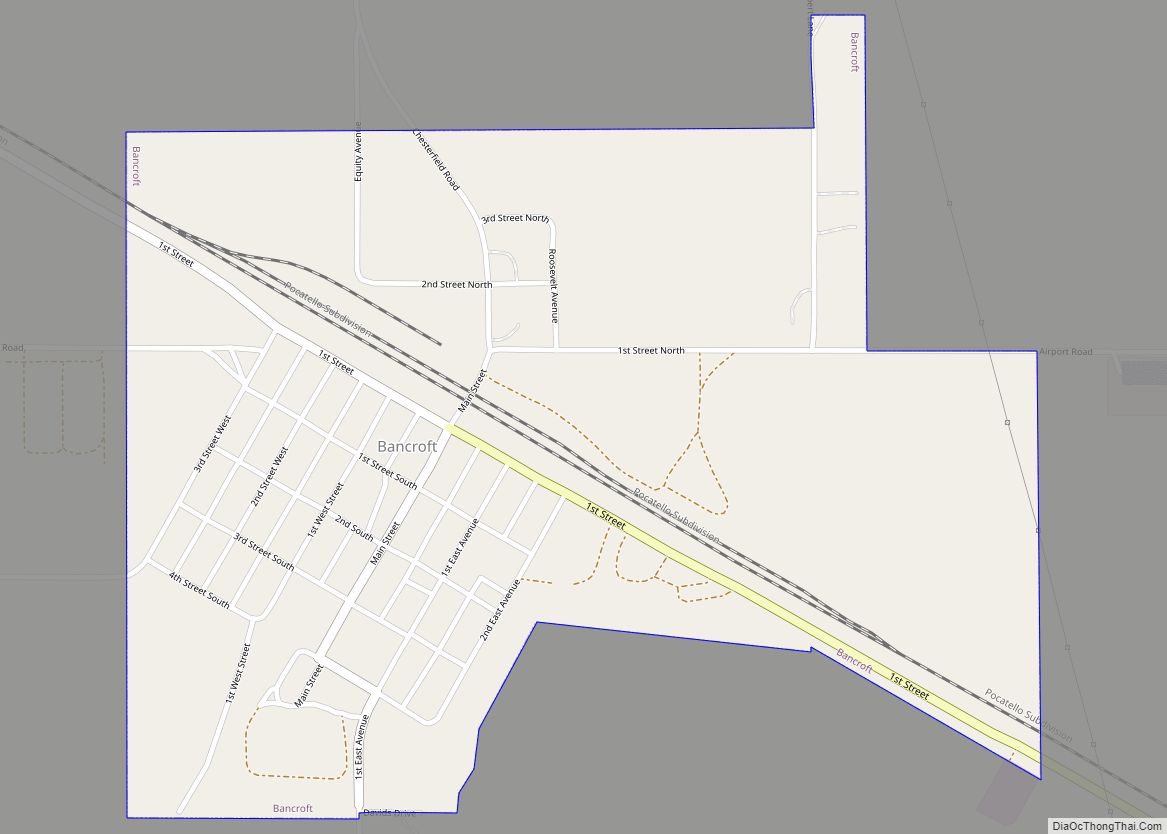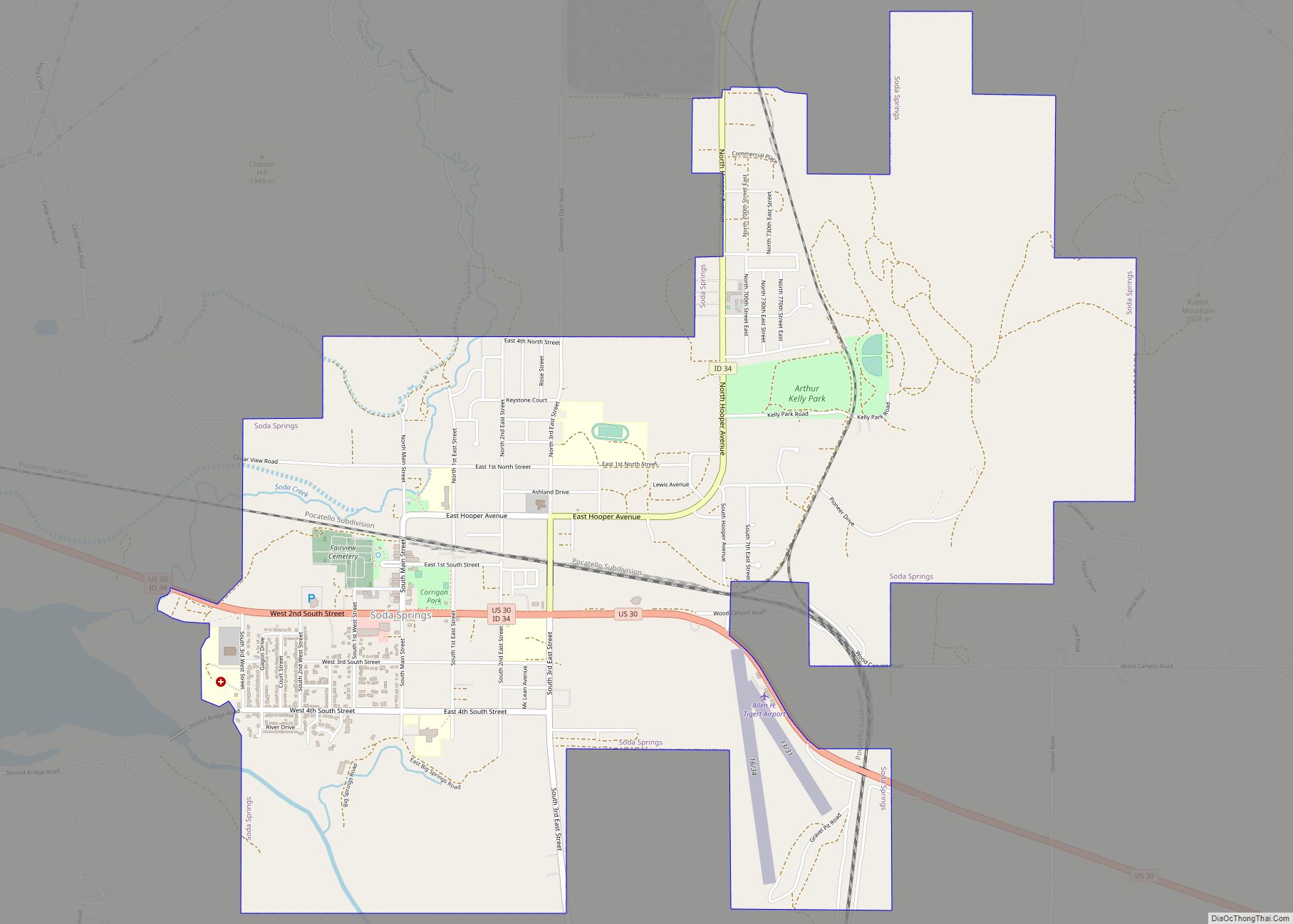Caribou County is a county located in the U.S. state of Idaho. As of the 2020 Census the county had a population of 7,027. The county seat and largest city is Soda Springs.
| Name: | Caribou County |
|---|---|
| FIPS code: | 16-029 |
| State: | Idaho |
| Founded: | February 11, 1919 |
| Named for: | Caribou Mountains |
| Seat: | Soda Springs |
| Largest city: | Soda Springs |
| Total Area: | 1,799 sq mi (4,660 km²) |
| Land Area: | 1,764 sq mi (4,570 km²) |
| Total Population: | 7,027 |
| Population Density: | 3.9/sq mi (1.5/km²) |
| Time zone: | UTC−7 (Mountain) |
| Summer Time Zone (DST): | UTC−6 (MDT) |
| Website: | www.cariboucounty.us |
Caribou County location map. Where is Caribou County?
History
Robert Stuart explored the area of Soda Springs in 1812. Donald McKenzie also explored the area in 1819. The explorers were followed by trappers, missionaries, and emigrants that would travel through on the Oregon Trail. Soda Springs’ namesake springs were an attraction for the trappers who met there to socialize on November 10, 1833. Missionaries and emigrant journal entries describing the springs date back to John K. Townsend’s journal entry of July 8, 1834.
In May, 1863, members of the Morrisite religious sect took refuge at the junction of Soda Creek and Bear River where they formed Morristown. At the direction of General Patrick E. Conner, a fort was constructed in the fall of 1863 for their protection. Soda Springs was established as the county seat of Oneida County when it was created January 22, 1864, serving as the county seat until 1866. The 1870 census lists a population of 144 for Soda Springs. Settlement of the present town of Soda Springs occurred in May, 1871 when Brigham Young and other Mormons purchased land at the present site of Soda Springs. Young would often recreate on his property holdings there.
Settlement in the western portion of the county from Thatcher to Chesterfield was primarily ranching and farming operations up until 1880. Chester Call, Chesterfield’s namesake arrived in 1880, bring his family in 1881. The towns of Chesterfield and Squaw Creek Station were settled in 1882. Squaw Creek Station was the initial name for Bancroft that was established when the railroad was built. It was renamed Bancroft on July 23, 1898. Settlement at the town of Grace commenced in 1893. Chesterfield declined in population while Grace and Bancroft endured.
All of present Caribou County became a part of Bingham County when it was created on January 13, 1885. The 1890 census lists four precincts of Chesterfield, Gentile Valley (now Thatcher), Little Blackfoot (now Henry), and Soda Springs with a combined population of 1,722. The Caribou precinct with 342 residents also contained residents within present-day Caribou County, but also included territory now in Bonneville County.
Bannock County was established on March 6, 1893. Bancroft, Chesterfield, Chubb Springs (now Henry), Gentile Valley (now Thatcher), Salt River (now Freedom), and Soda Springs were in existence at the 1900 census with a combined population of 3,430.
When the legislature formed Caribou County on February 11, 1919, Bannock County retained the Gem, Gentile Valley, and Upper Portneuf valleys. The retained area contained 4,486 residents at the 1920 Census, declining to 3,572 residents by the 1940 Census. On January 11, 1948, the residents of this area voted to become part of Caribou County.
Caribou County Road Map
Geography
According to the U.S. Census Bureau, the county has a total area of 1,799 square miles (4,660 km), of which 1,764 square miles (4,570 km) is land and 34 square miles (88 km) (1.9%) is water. The county’s highpoint is Meade Peak at 9,963 ft (3036.8 m) above sea level.
Adjacent counties
- Bonneville County – north
- Lincoln County, Wyoming – east
- Bear Lake County – south
- Franklin County – south
- Bannock County – west
- Bingham County – northwest
National protected areas
- Cache National Forest (part)
- Caribou National Forest (part)
- Grays Lake National Wildlife Refuge (part)
Major highways
- US 30
- SH-34
